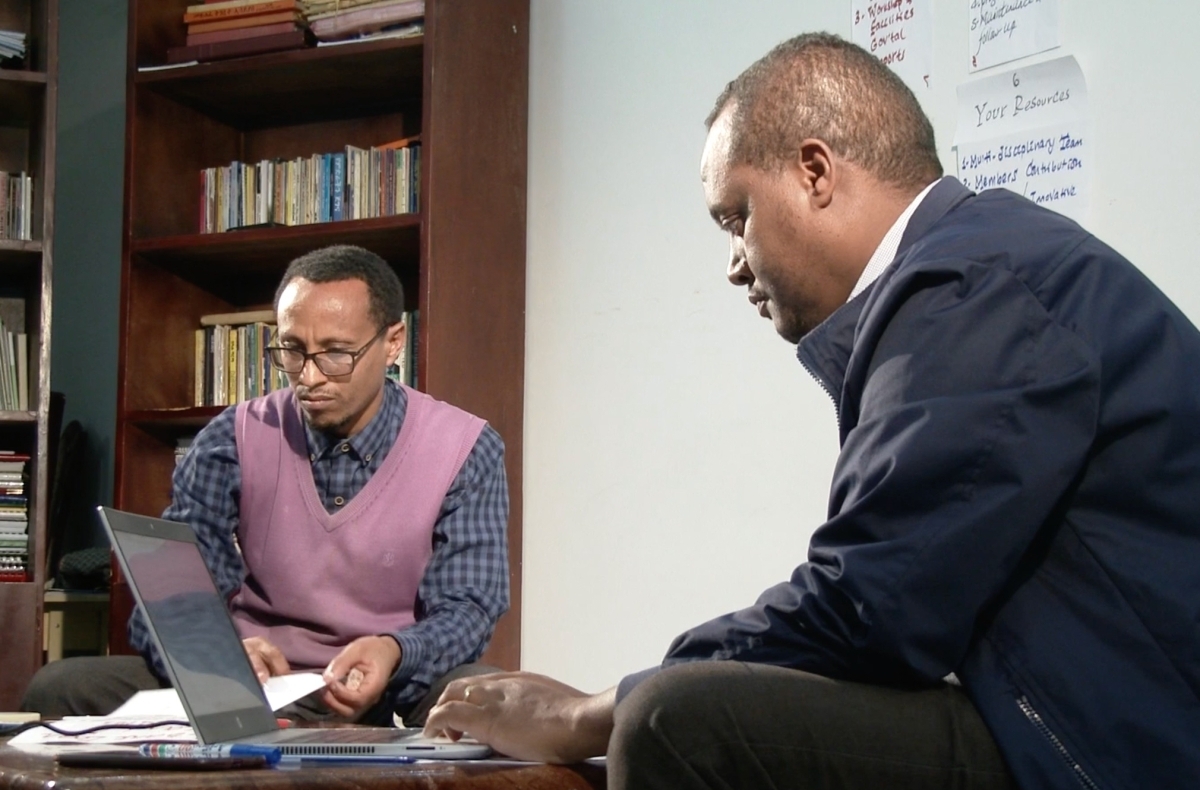WHD’s STAR program leaves a lasting legacy
STAR’s “train the trainer” initiative empowers a new community of problem solvers to address problems in West Africa and beyond
May 22, 2022

Like many plans made over the last few years, those of WHD’s fledgling Systems Tools for Assessment and Response (STAR) program were upended by the global pandemic. Through a series of pivots and adaptations, STAR’s “train the trainer” initiative was reshaped into an innovative, online experiential learning community that successfully trained 19 West African candidates in advanced problem-solving methodologies. Participants and organizers believe the revised offering exceeded expectations and left a lasting legacy.
“Our usual way of offering training—helicoptering in, convening in a hotel, delivering information, and then flying home—isn’t necessarily the best way,” said WHD Deputy Director Rachel Cardone. “There’s often insufficient follow-up to measure uptake and assess implementation. The pandemic forced us to shift away from that model and envision something different.”
Instead of a brief series of workshops, Cardone and her team created a six-month distance learning program through which participants acquired new skills and were then provided real-world opportunities to apply them.
“In the end, I’m grateful that we had to pivot the program the way we did,” Cardone said. “The result was better uptake and better community building.”
The STAR program began as an idea floated to Stanford’s Water, Health and Development team by the Conrad N. Hilton Foundation’s Safe Water Initiative. The foundation sought to develop a series of problem-solving workshops for its grantees and local stakeholders in West Africa and Uganda, in part to help them navigate requirements of their grant writing process.
“The issue the STAR program was aiming to address,” said Cardone, “was that proposals and grant applications coming into the Hilton foundation often included ambitious problem statements and bold ideas but weren’t grounded in the specifics or details that defined those problems or how they could be solved. There was a disconnect.”
The STAR program, funded by a Hilton Foundation grant, sought to close that disconnect. The concept involved training stakeholders and grant writers in problem-solving methodologies. Once trained, those trainers could share their knowledge with other practitioners in their organizations or areas of interest, thereby raising the probability that big issues could be addressed.
“A researcher’s job is to identify problems and define specific, scalable solutions,” said Cardone. “Within WHD, we routinely scope problems to solve in our daily work. We identify possible solutions, detail specific steps required to implement those solutions, and devise methods for scaling them.”
But in the practitioner’s role, Cardone said, ambitious dreams and scaled solutions often take hold before problem specifics are identified, and before pragmatic methodologies—ones supported by data, information, and effective storytelling—are formulated. That leaves uncertainty about whether plans and actions will translate into viable solutions—something that is even more important in resource-constrained environments.
STAR proposed a method for strengthening the problem-solving skill sets of those on the ground. The program sought to expand the use of critical thinking and root cause analysis, and to foster development of robust capabilities among the Hilton Foundation’s grantees and local partners working in their areas of focus. Once trained, program participants would become trainers themselves and could use their knowledge and skills to train others in problem-solving principles.
The program’s content integrated elements of “lean thinking” — a way of adding value with fewer resources and less waste — with stakeholder relationship mapping and participatory methods to assess and resolve systemic challenges. Originally the training was to be given through a series of workshops, delivered on site.
“The workshops, which were originally scheduled for early 2020, were canceled due to restrictions imposed by the global pandemic,” said STAR program coordinator Heather McRae-Woolf. “In response, we pivoted and created a 100-percent-virtual and replicable training program.”
Nineteen STAR participants, or “coaches,” were recruited from diverse backgrounds, including water, sanitation and hygiene (WASH), sustainable agriculture, organizational capacity building, and humanitarian response. Coaches took part in three training phases: Exposure, Experience, and Application.
To coordinate learning, STAR trainees engaged with a case study based on a fictional country called Kila. Trainees were assigned roles and tasks that allowed them to apply STAR tools in this simulated real-world setting.
“By learning STAR tools through a case study, coaches were able to approach the material on a level playing field,” said McRae-Woolf. “Regardless of their levels or types of experience, they connected with their roles from a similar knowledge base in the context of the simulation.”
During the Exposure phase, trainees participated in a six-week virtual course that included weekly Zoom sessions. Trainees were required to review video and written materials prior to each session and submitted homework assignments prior to live get-togethers. This “flipped classroom” approach accelerated learning and allowed for greater interactivity during the live sessions.
During the Experience phase, WHD’s STAR instructors led remote workshops for local government and NGO representatives, while trainees assisted and coached participants in between workshop sessions. During the final Application phase of the program, trainees worked independently with Hilton Foundation grantees or other local organizations, with behind-the-scenes support from STAR instructors.
While the STAR grant concluded at the end of March, the community inspired by STAR continues to thrive, expand, and interact. STAR trainees now act as coaches and are working with WHD to apply program principles in Sierra Leone, Kenya, and elsewhere. In addition, more than 150 people, including past participants and those interested in becoming trainers, have joined a Linkedin page that acts as a sort of STAR problem-solving and networking forum. All of this sits well with Cardone.
“We wanted to create a unique site where coaches could tell their stories, share what STAR meant to them, and how they are using their tools,” Cardone said. “It’s a thriving community that continues to grow. It’s also a very diverse group that extends well beyond our original team — and that’s a testament to the success of STAR.”
Contact Information
Rob Jordan
Associate Editor, Environment and Sustainability, Woods Institute
rjordan@stanford.edu


